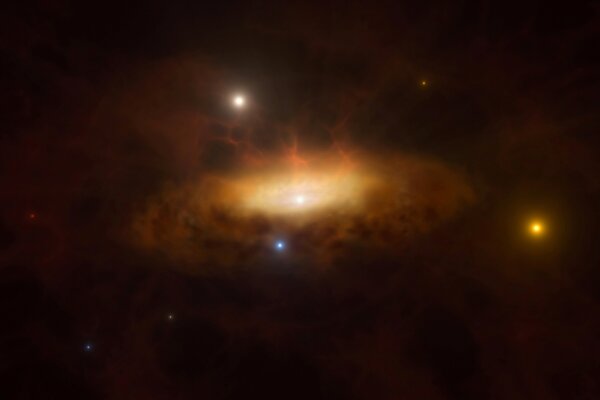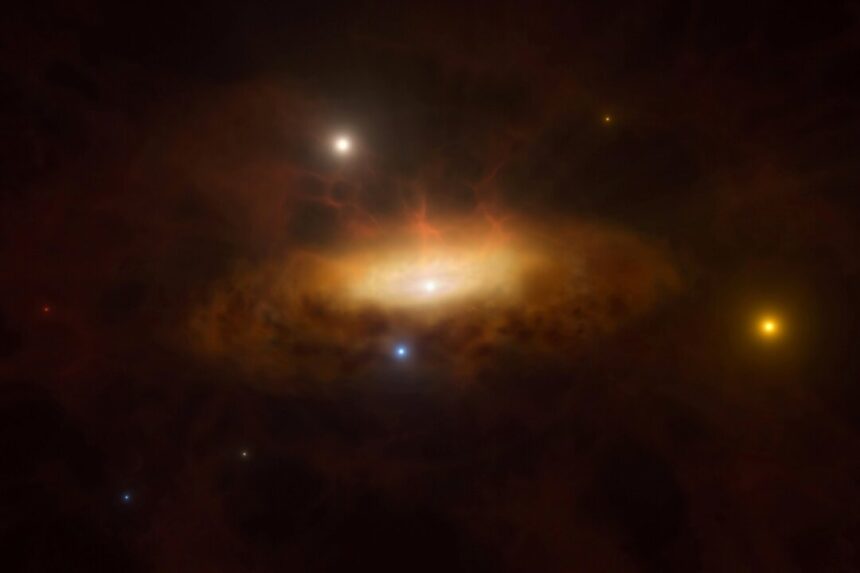
Scientists have observed a supermassive black hole awakening from dormancy and beginning to consume nearby material in real-time. This phenomenon was seen at the core of a galaxy called SDSS1335+0728, located 360 million light-years from Earth.
Supermassive black holes are incredibly dense objects with strong gravitational pull. The awakening of the black hole in SDSS1335+0728 resulted in the formation of a spinning disk of material around it, radiating energy at high temperatures.
Such bright regions, powered by supermassive black holes, are known as “active galactic nuclei” and emit large amounts of energy across various wavelengths. This observation is crucial for understanding galaxy evolution and the physics of black holes.
The sudden changes in the luminosity of the galaxy were detected in 2019, indicating the activation of the supermassive black hole. While no high-energy particle jets were observed in this instance, the researchers are still investigating the cause of this awakening.
The researchers are unsure of what triggered the awakening of the black hole, speculating it could be a natural process of the galaxy or an external event like a falling star. If the observations do not signify the onset of an active galactic nucleus, it would be a new astrophysical phenomenon.
This discovery raises questions about the dormant supermassive black hole Sagittarius A* located 26,000 light-years from Earth. While it is currently inactive, there is a possibility of it awakening in the future.
By Will Dunham





